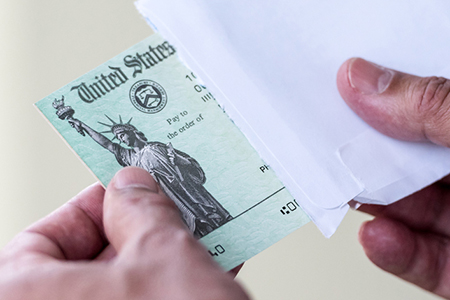(TNS)—Got your 2017 tax return filed yet?
OK, you still have some time. But here’s a reminder that the tax season just kicked off Jan. 29, as the Internal Revenue Service began accepting returns.
The deadline this year is April 17.
Many tax software companies and tax professionals began accepting returns a few weeks ago and will now submit those returns as the IRS systems open.
Here are five things you need to know early in the tax season:
- How soon can I get my tax refund?
Under the law, the IRS cannot issue refunds before mid-February for returns claiming the Earned Income Tax Credit and the Additional Child Tax Credit. The earliest those related refunds could show up in bank accounts or on debit cards could be Feb. 27.
Still, tax experts say if you have the paperwork to file early in the season, don’t wait.
The IRS issues most refunds in less than 21 days, although some require additional time.
- What is the Earned Income Tax Credit?
Many lower income people still don’t realize they’re missing out on a big bonus check during tax season if they ignore the Earned Income Tax Credit.
The earned income tax credit is designed to help low to moderate working households.
For 2017 tax returns, the maximum adjusted gross income limit for claiming the Earned Income Tax Credit is $48,340 if you’re single and have three or more qualifying children to claim and $53,930 for a married couple filing jointly.
The limits are lower for those with fewer or no children. For those with no children, for example, the income limit drops to $15,010 for single, head of household and surviving spouse filers and $20,600 for married filing jointly.
The corresponding maximum tax credits range from $510 with no qualifying children to $6,318 with three or more qualifying children.
Another EITC tip: Be sure you have all your Forms W-2, W-2G, 1099 MISC, and all other income records, even if not reported on a form, before your file your return. And, you need to report all income you earn from running or owning a business or farm and deduct all allowable expenses.
- Where can you find free tax help?
Tax filers who have incomes below $66,000 are eligible for “Free File” software via www.irs.gov. The IRS estimates that about 70 percent of the nation’s taxpayers are eligible for IRS Free File.
- What’s everybody going to do with those tax refunds?
Many taxpayers, including millennials, are most likely to say they’ll save the money or pay off debts, such as student loans or credit cards, according to a poll by TaxSlayer.
But some acknowledge that they will splurge, too.
Roughly one in eight taxpayers say they’re going to treat themselves to a big gift, like electronics or jewelry. Roughly one in eight say they’re going to use that refund money toward going on vacation or out to dinner, according to the TaxSlayer poll.
- Where is your refund?
The “Where’s My Refund?” tool at the www.irs.gov and the IRS2Go phone app are updated regularly with projected refund dates.
To check your refund status, you need your Social Security number or individual taxpayer identification number, your filing status and the exact amount of your expected refund.
©2018 Detroit Free Press
Visit the Detroit Free Press at www.freep.com
Distributed by Tribune Content Agency, LLC
For the latest real estate news and trends, bookmark RISMedia.com.











